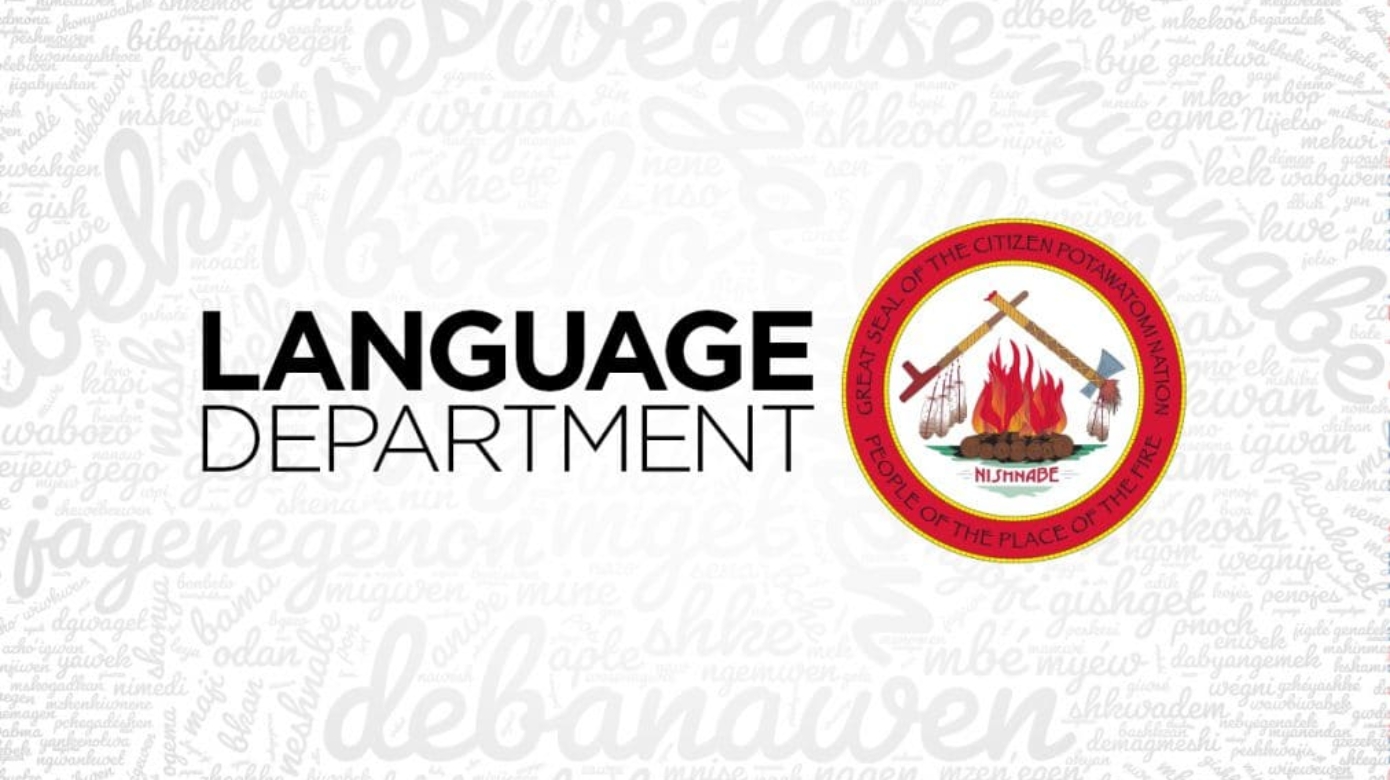By Justin Neely, CPN Language Department Director
It’s a busy time in the Language Department as we are finishing up the first semester with our high school students and the third nine-week course with Shawnee Middle School.
Our staff is doing an awesome job helping to manage the online high school content and going into the Child Development Center Monday through Thursday. I was just told today one little one could count to 10. It’s always very exciting to see the growth of our children, not only in their knowledge of our language and culture but also in their Potawatomi pride.
We also have been offering an intermediate course on Mondays from 1 to 2:30 p.m. and Thursdays from 10:30 a.m. to noon CST. We have had about six regulars on-site and around three to five join us for the class online. All the classes we teach in Shawnee are also done on Zoom so Tribal members anywhere in the country can join in. We record the classes so that we can place them on our YouTube channel. We have one geared toward children and one geared toward adult learners. You can find the channels at cpn.news/langyt and cpn.news/childrenyt. We also share the live class in the Potawatomi language group on Facebook.
We are still working on getting our newest self-paced course online using the new Tovuti platform. In the meantime, don’t forget about our two courses on memrise.com and also our online dictionary that we add to weekly.
Another exciting recent project is a frequency word list. In English, you have different word lists, like the Dolch sight word list, which reflect the top 500 or 1,000 words used in the language. The reality is that with most languages, we have around 1,000 or 2,000 total words that are the main words we use every day. So, by identifying those high-frequency words in Potawatomi, it not only allows us to help our students but also gives them a tool to increase their usage of the language.
We are continuing on our children’s book project. We are currently working on the self-publishing aspect as well as finishing different children’s books.
We have done several cartoons and films in the public domain, such as old Popeye the Sailor Man, Woody Woodpecker, Superman, and even longer cartoons such as Gulliver’s Travels. We are currently working on an episode of The Beverly Hillbillies, which should be very amusing when we finish it. I dream that someday we will be able to do Star Wars, PJ Masks or even older cartoons in our language. Right now, public domain films with no copyright restrictions are mostly from the 1940s and earlier.
Soon, we will be hosting our annual Winter Storytelling event. We haven’t chosen an exact date, but expect it to be in late February. I hope that this year, with plenty of social distancing, we will be able to have the event live and on Zoom.
I had the honor and privilege to name a 100-year-old Tribal member. It is always an honor to be asked to name an individual, and her granddaughter asked to be named as her one request for her birthday. Ms. Capps helped make the event very special for Edith and her family.
Bbon kedwenen (Winter words)
When snow is coming down, it’s boni, and once it’s on the ground it is gon. Boni indicates a flutter or falling motion involved.
Bonimget — It’s snowing. (Bone eemgit)
Ksenyamget — It’s cold. (Kuh sin yahm git)
Gon — snow on the ground (goen)
Mkomiswen — It’s icy. (muh comb ees win)
Gon nene — snowman (goen nuh nay)
Gonkiwen — snow on the ground (goen key win)
Shkagwnegya — slushy snow (shuh kag wuh nugyah)
Nshiwpo — heavy snowfall (nuh shee oh poe)
Shpagwnegya — deep snow (shuh pahg wuh nuhg yah)
Mcheknebbon — winter with no snow (muh chuck nehb bone)

